Simon Leese translates Taṭawwurāt al-ʿalāqāt al-thaqāfīyah al-ʿarabīyah—al-Hindīyah (The Development of Arab-Indian Cultural Relations) by Mohiaddin Alwaye in al-Risālah 1083, 15th October 1964: 15-17, 20. The original essay can be found at the Alsharekh.org archive.
The Development of Arab-Indian Cultural Relations
Written by Mohiaddin Alwaye, translated by Simon Leese.
The roots of cultural relations between the Arabs and India stretch far back into the past. Throughout the changing tides of history, these relations have continued to develop and take shape until the present day. Today, they are strong and well-established. They have also expanded in scope in more recent times since the Arabs and India have come together in mutual admiration and compassion. Both nations have lead the way in a common political struggle to liberate themselves from foreign interference, an almost insurmountable obstacle to real progress in all facets of life. Inspired by the most noble principles, the political and cultural leaders of India and the Arabs have brought about a new chapter in the history of Arab-Indian relations. Through their efforts, the two peoples can embark upon a new era of cultural exchange and pursue an intellectual meeting of minds. It is appropriate, then, to take a little time to ponder the contours of these relations as they play out in both countries today in order to appreciate just how much India has been, and still is, indebted to the Arabs, and how much, in turn, the Arabs are indebted to India.

A copy of The Creeds and Sects (al-Milal wa’l-nihal), ‘al-Shahrastani. Wikimedia Commons.
In his book Creeds and Sects (al-Milal wa’l-nihal), the great scholar al-Shahrastani, who died in 548AH/1153AD, discussed different classifications of the world’s population. “Some divide them into great peoples (ummahs),” he wrote. “They say that there are four great peoples – the Arabs, the Persians, the Greeks [1], and the Indians. They then divide these four peoples further into pairs, and say that the Arabs and Indians come close to sharing a single philosophical outlook; they are inclined to establish the particular characteristics of things, derive laws of essences and ultimate truths, and engage in spiritual matters.” Thus, the approach of Arabs and Indians in establishing theories and laws of universal matters closely resemble each other.
Furthermore, India’s goods and produce were a source of great interest for the Arabs. They pursued trade with India and helped ensure that trading relations blossomed between the two lands. This is clear from the many names of Indian exports to Arabia that can be found in the poetic odes and prose writings of the ancient Arabs, such as pepper, cloves, and the so-called muhannad – a sword made of Indian steel. It is even said that one of the names given to India, “al-Hind” comes from the Arabs. This name exists alongside India’s well-known original name “Bharat”, which is the country’s official name laid down in the constitution. The Arabs, though, used to attach the girl’s name “Hind” to everything they found dear in a way that echoed the names of the daughters they loved. When trade and cultural relations between the two countries were well established, and the Arabs came to value Bharat and its commodities, they started applying the alternative word “al-Hind” to that land in their poetry and everyday speech. As time passed, the country became known principally as “al-Hind”.
It is common knowledge that relations between India and the Arab world began 3,000 years before Christ. The Arabs had been travelling to India’s Western shores many centuries before Alexander the Great arrived. India’s agricultural produce was imported to the Arabian Peninsula though the Gulf, and from there Arab traders transported it to Syria and Egypt. It was from these two countries that Western traders bought such commodities before importing them back to their own lands. Following the migration of the Prophet (Peace Be Upon Him) to Medina, the message of Islam spread successfully, and hundreds of Arab tribes embraced Islam during the years that followed. The inhabitants of Yemen and Hadhramaut came to Islam in their multitudes. They were all traders who shipped goods to the Gulf, Egypt, and Western coastal regions of India such as Malabar, Coromandel, and Sind. They also shipped them to Sri Lanka, Java, China, and other far-flung lands. It was through these traders that the voice of Islam reached India and Sri Lanka only shortly after its dawn broke in the Arabian Peninsula. The Arabic language and its literature, therefore, began to spread and take root across India through the efforts of Arab and Indian men who had embraced Islam. They strove to disseminate the Arabic language and its learning all over the country. As the the language of the Noble Qurʾan and Islamic sciences, Arabic was what connected India with the Arab world.
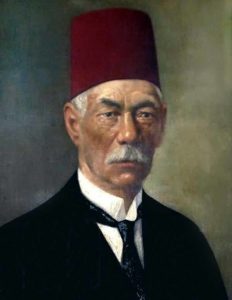
Saad Zaghloul, Wikimedia Commons.
The peaceful and harmonious arrival of Islam to India made a great impact in the hearts of millions of Indians. It helped expand the scope of cultural relations and spiritual links between Arabs and Indians. Aspects of Arabic culture emerged across India, while Arabs, and in particular Arab scholars, became more and more interested in India. Arab influence was tangible along the coastal regions of the Indian subcontinent, with Arab traditions and customs spreading throughout those regions where the first Arab migrants settled. Cultural and intellectual relations between India and the Arab world continued to blossom until foreigners rolled out their policy of “divide and conquer.” During the nineteenth century and the first half of the twentieth century, India and Arab states lived through a time of oppressive colonial domination. Though cooperation and deep friendship, both worked towards winning their liberation from the yoke of the foreigners. Proof of this can be found in the understanding and empathy that was visible among the ranks of Indian and Arab leaders. At the same time, many Arab writers, literary figures and intellectuals of the period were well known in India. While leaders such as Ahmed ‘Urabi, Saad Zaghloul, and Mustafa Kamil strengthened political rapport and cooperation with the likes of Gandhi, Nehru, and Azad, writers such as Ahmed Shawqi, Hafez Ibrahim and Shaykh Muhammad Abduh left their mark within the cultural and literary domain in the writings of Tagore, Shibli Nomani, and Dehlvi [2].
After they achieved complete liberation from foreign political control, a new era began for both Arabs and India. This era has witnessed the strengthening of cultural relations alongside progress in politics, economics, and society. It is extremely heartening to see the scope of ongoing cultural relations between the two peoples continuing to expand day by day. This is all thanks to the endeavours of men from both countries, men who are imbued with the spirit of thought and literature, and are inspired by the light of knowledge and profound insight.
There are many things that demonstrate the extent of Arab-Indian cultural relations. Spread across India are Arabic language and literature institutes, Arab schools supported by charitable backing and public donations, and Arabic colleges supervised by and financially backed by the most prestigious government universities. There are also numerous universities with dedicated departments for Arabic studies: Aligarh University in North India; Osmania University in Hyderabad, the University of Madras, and the University of Kerala in South India; Bihar University and the University of Calcutta in Eastern India; the University of Lucknow and the University of Allahabad in Central India; and the University of Kashmir and others. Now, all over India, there are wonderful libraries that hold valuable collections of both old and modern Arabic books and manuscripts, such as the libraries of Aligarh University, Osmania University, Darul Musannefin in Azamgarh, Darul Uloom in Lucknow, Deoband, and Nadwatul Musannefin in Delhi. There are also institutions that publish and print works in the Arabic language, both old and new. These include Dairatul Ma’arifil Osmania in Hyderabad, the Indian Council for Cultural Relations in Delhi, and Nadwatul Ulama in Lucknow. The aforementioned Indian Council publishes an Arabic-language magazine named Thaqafat-ul-Hind (‘The Culture of India’), while in Lucknow an Arabic-language journal called al-Baas-ul-Islami (‘The Islamic Awakening’) is published. In the Malabar coastal region in the state of Kerala there is a literary magazine published in Arabic called al-Bushra (‘Good Tidings’). Tangible manifestations of Arabic culture in India such as these are expanding in scope and promise a bright future to come across the country.

Indo Islamic Architecture of Delhi Sultanates, Wikimedia Commons.
An Arabic character can be seen in much of Indian art as well as the magnificent architecture that is spread all over the country: forts, mosques, tombs and other historical buildings. Traces of Arab art’s splendour is so evident in some of these buildings that visitors to major cities such as Delhi, Argra, and Hyderabad might, at first glance, imagine themselves to be at a historical site in an Arab country. Likewise, visitors can see a range Arab dress worn widely by Indians regardless of their different religions and sects, such as turbans, jilbabs (robes), shilwals (loose trousers), taylasans (shawls), and qalansuwas (head caps). Visitors can also see large numbers of Arab trading communities in coastal cities in Kerala, Bombay, and elsewhere who have preserved their culture and authentic Arab customs. These traditions and cultural ways of life have permeated into different celebrations and festivals as well as the daily lives of the local population. This is just one small part of the impact of cultural relations between the two peoples over the passing years.
The influence of Arabic is clearly evident in Indian languages and their literature. The Arabic language, with it alluring charm and rich depths, and helped elevate some of India’s languages. 30% of words in Urdu, for example, are Arabic. Other languages that have been influenced by Arabic include Punjabi, Malayalam, Gujarati, Sindhi, and Kashmiri. Sindhi, a language of both Hindus and Muslims, is still written in the Arabic script and contains countless words from Arabic. More than any other Indian language, its stylistics are close to Arabic. Some communities in Gujarat also use the Arabic script to write their language. Interestingly, Muslims in the Malabar region write their language, Malayalam, in the Arabic script. Despite not being a language of conversation and communication between Indian Muslims, they consider it to be a sacred language. Every day they recite the Qur’an and devotional chants in Arabic, even if they are not able to follow their meaning.
In all the ways discussed above, we can see the clear impact of Arab culture in different aspects of Indian life. Political relations between Arabs and India, meanwhile, have always been built upon mutual admiration and respect. Abundant proof of this can be found in the writings of Arab explorers and travellers, from historical figures such as Sulayman ‘The Merchant’ in the ninth century, al-Biruni in the in the eleventh century, and Ibn Battuta in the fourteenth century, up to historians of the present day. When they first came to India as traders, Arabs were met with a warm welcome. They set up roots in their new home and married into local families to share peaceful cultural relations. Indians, in turn, won the admiration and trust of the new Arab arrivals. These strong links had an abiding impact on the material and intellectual lives of both peoples.
India has therefore been a surrogate home to Arab culture, literature, and learning. Everything the Arabs have contributed to India over the ages has also served to build firm foundations that continue to underpin cultural relations between the two lands today.
Even a fleeting look at what India has given to the Arabs in regards to their cultural and scientific awakening (Nahda) is enough to identify plentiful examples in Indian sciences, philosophy, and learning. The process of translating Indian scientific learning and philosophical thought to Arabic continued up to the beginning of the eleventh century AD when Abu al-Rayhan al-Biruni came to India. He translated a number of Sanskrit treatises into Arabic in order to produce his massive book about India. This book is considered the most comprehensive book ever to have appeared in Arabic about the country, it’s sciences, religions, customs, and traditions. India has also given much to the Arab world in the field of theoretical sciences, such as the Indian mathematics, arithmetic, the number system, fractions, and methods to find square and cube roots. Additionally, al-Fazari translated the Brahmasiddhanta, a famous work of Indian astronomy, into Arabic. Many ancient Indian medicinal writings were also translated into Arabic. The impact of this is apparent in the works of Ibn Sina, al-Razi, and others. In the field of geography, too, Arab scholars drew on a range of Indian works and their theories. Indian religion and philosophy also had an impact on the lives of Arab thinkers, as is abundantly clear in the philosophy, writings, and poems of Abu al-‘Ala’ al-Ma’arri.
Generally speaking, therefore, India, with all its philosophy and traditions of learning, played an important part in the Arab cultural awakening (Nahda), particularly in the days of the Abbasids. Likewise, the Arabs have contributed to progress in India, giving impetus to the country’s sciences and arts in the middle ages.
Now what we need is a continuation of efforts to expand the scope of Arab-Indian cultural relations. Although they are already firmly established, strengthening their roots will not only serve the good of both these great peoples, but will benefit humanity as a whole.
Read the original essay here, and the continuation here.
These images are available on an open usage licence. Read them in the original journal here.
Mohiaddin Alwaye was a scholar from Kerala who studied in South India and later at al-Azhar. In Egypt he published in literary magazines. Much of his writing seems to have related to Islam; the articles on Indian literature in al-Risālah are an exception.
In the same journal, he also wrote articles as part of a series called al-Ādāb al-sharqīyah al-muʿāṣirah (‘Contemporary Eastern Literatures’) on Urdu, Sanskrit, Bengali, Punjabi, Kashmiri, and Hindi literature, as well as separate articles on Nehru, and student delegations to India ‘to mark the signing of the scientific and cultural exchange agreement between India and the United Arab Republic.’
‘The Message’. Weekly journal for Literature, Sciences and Arts published from 1933 until 1965 (Egypt)
Editor in Chief Aḥmad Ḥasan al-Zayyāt
Read the statement of first issue
*This article is accompanied by a picture of Egyptian President Gamal Abdel Nasser and Indian Prime Minister Lal Bahadur Shastri


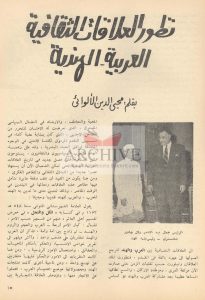
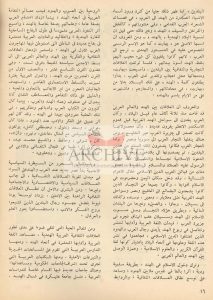
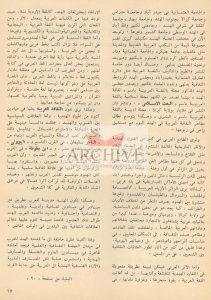
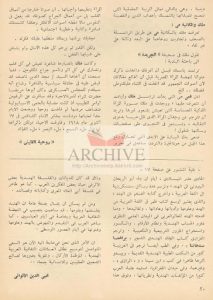
Leave A Comment